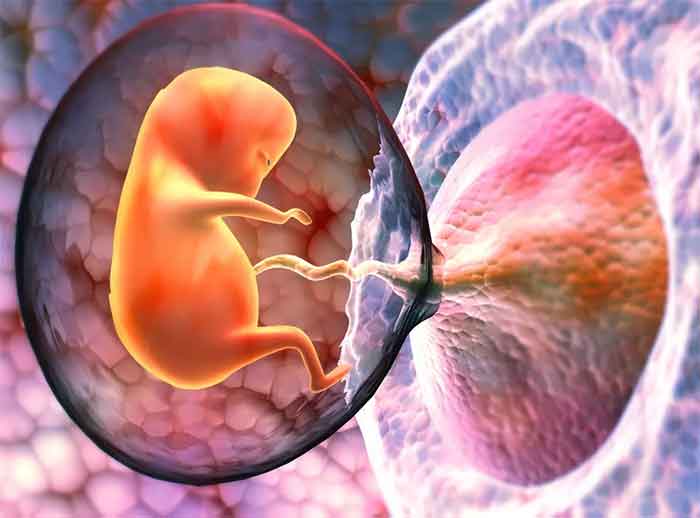Eva Badola
Researchers finding microplastic in the placenta of pregnant women buzzes precursor alarms to life on earth.

Plastic has prevailed in every sphere of the planet earth, from deepest trenches in the ocean to the highest mountains; even the mother’s womb could not escape plastic. By 2040, scientists estimated that earth would be dumped with 1.3 billion tonnes of plastic, in the land and oceans.
The outbreak of COVID-19 pandemic made us mask our nose and mouth, to prevent breathing in the virus. But which human mechanism will filter microplastic mixed in water, food and air? Wearing a mask to prevent inhaling in the plastic may turn into a reality beyond imagination in the nearest time.
When Dr Antonio Ragusa and his team sat examining the detached placentas of six pregnant women, what they found was startling. Placenta, the organ developed during pregnancy, acts as a lifeline between the baby and mother’s blood supply. Attached to the mother’s womb, it processes baby’s nutrients, waste and oxygen. So, what you expect in the placenta is pretty much-organic matter. But the team of doctors saw more than that, they found a dozen micro-plastics in the placenta of four healthy pregnant women, out of the six investigated.
“It is highly worrisome to find artificial material-microplastic- in the placenta. Especially, considering the important role placenta plays in foetus development”, says Dr Ragusa, the lead author of the study and the director of Obstetrics and Gynaecology at the San Giovanni hospital in Rome, Italy.
But from where and how do these tiny pieces ended in a human body?
The answer is around us. Each year earth is loaded with about 30 million tonnes of plastic-waste; further, burning 50 million tonnes in open and flowing 11 million tonnes to ocean causing massive environmental perturbation.
We only see the large single-use plastic like straws, packages etc. swirling in the oceans or clogging our drains. But the invisible culprits are the tiny particles called microplastics. These degraded plastics smaller than five millimetres can come from practically anything; broken off from large items like plastic shards, car tyres, etc. or microbeads developed for cosmetic products. Ragusa’s study published in the Journal Environment International, says that the plastic particles in the placenta having five-to-ten-micron size came from paints, adhesive, plastic and personal care products.
Outside-inside, engulfed in plastic particles
Back in the 1940s, companies introduced synthetic fabrics like acrylic, nylon and rayon made out of plastic. These synthetic materials earned so much popularity that by 2019, 60 per cent of our clothing was coming from plastic. Meanwhile, cities got engulfed in microplastic pollution. Microplastics was detected in our salt, bottled water, food, and even in milk formula from infant feeding bottles.
We are consuming nerves damaging toxic substances from wild fishes ingested with microplastic in their muscles. Finding microplastics in fishes and prawns’ organs indicates how oceans are enormously dumped with the plastic.
Now, one may prevent ingesting micro-plastic by avoiding bottled water or consuming fish from a polluted sea. However, it turned out, a majority of microplastics in our bodies comes from inhaled air. A study in 2019 estimated that a city-dweller on average is inhaling up to 0.121 million micro-plastics annually. Moreover, children playing outside can consume 3,200 plastic bits a year from street dust and debris.
To reveal the enormity of human exposure to indoor microplastic pollution, scientists build a manikin with mechanical artificial lungs that could suck up the air in a typical apartment; imitating the breathing of a human living in a home. They were horrified to found the manikin was inhaling up to 272 microplastics within 24 hours. When inhaled, these micro-pieces have higher chances of getting absorbed in the body than being sneezed or coughed out. Once inside our body, they can travel through the blood into our organs.
In an experiment, when pregnant rats inhaled nanoparticles of polystyrene, the particles travelled to their placenta, lungs, heart, kidney and brain. Such tiny plastic particles and fibres are also found in human poop.
Ragusa explains how microplastics penetrate human cells through breathing, “The aerodynamic shape of micro-particles helps them to reach the lower part of our respiratory tract without constraints. Since the mucus layer is relatively thin in the lower respiratory tract, micro-particles can easily pass through into our bloodstream and reach the cells of any part of our body.”
Could the inhaled plastic by mother reach its unborn baby?
Cities are teeming with air pollutants like black carbon as a result of aggravating air pollution. When breathed in by pregnant women, these black carbon particles are suggested to transfer across the placenta towards their unborn babies.
Similar is the case with micro-sized plastic. In an experiment, when pregnant mice were exposed to microplastics, a fatty acid metabolic disorder was visible in their offspring. Indicating the sort of health implications microplastic can impose even on the next generation.
“The presence of micro-plastics can tamper with the metabolic activity, a mechanism with which the human body uses its fat”, Ragusa explains. His research team found that micro-plastics could perturb the immune system, lowering body defences against pathogens during pregnancy. Fibrous microplastics are known to deposit deeply in the lungs causing respiratory irritation, damage genetic information within cells and increase cancer risk.
However, scientists still await more vital evidences to show that microplastics can travel from a mother to the baby, passing the placenta’s natural barrier.
Evidences after evidences of severe harmful impacts of microplastics on environment and life on earth are eye-opening to call for global leaderships to take drastic actions, beyond boundaries and beyond developmental priorities.
No comments:
Post a Comment